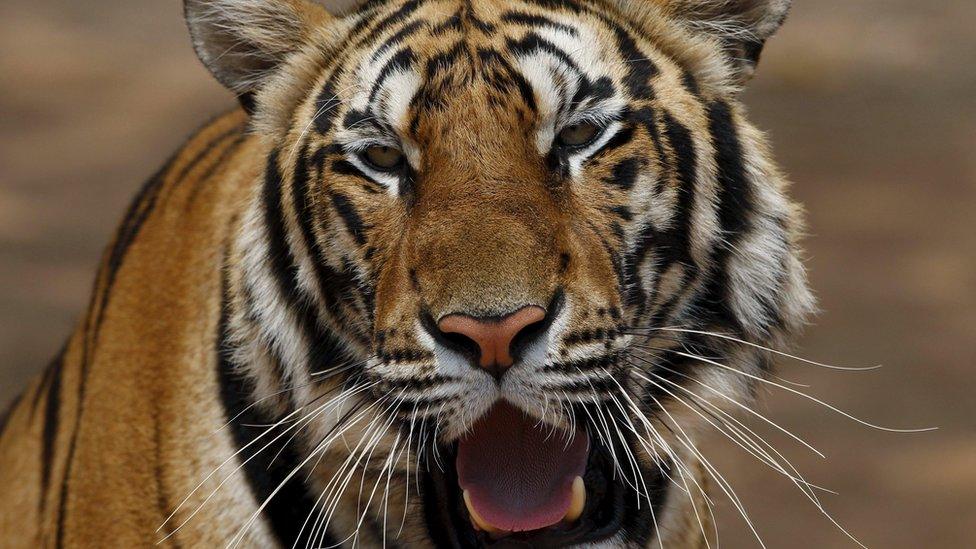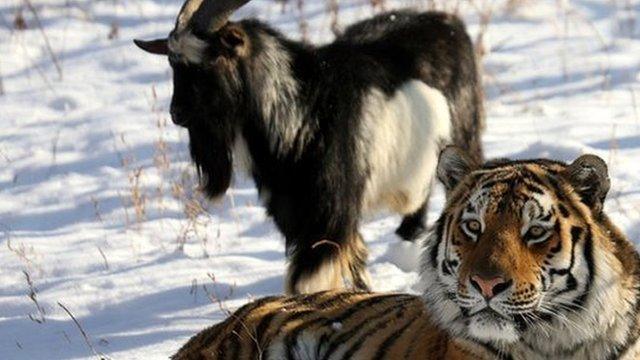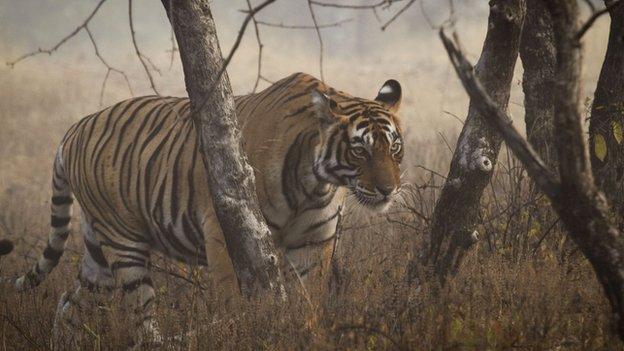Tiger numbers show increase for first time in a century
- Published
The BBC's Richard Lister: "The threats have not gone away"
The estimated number of wild tigers worldwide has risen for the first time in a century, conservationists say.
The World Wildlife Fund (WWF) and Global Tiger Forum, external said 3,890 tigers had been counted in the latest global census.
In 2010 there were just 3,200 tigers in the wild. In 1900, there were 100,000.
While hopeful that the numbers indicate a population increase, experts cautioned it could also just indicate improved data gathering.
"More important than the absolute numbers is the trend, and we're seeing the trend going in the right direction," said Ginette Hemley, senior vice-president of wildlife conservation at the WWF.

Although there are tigers in Cambodia, like this one, none are thought to be breeding
WWF International's director general Marco Lambertini said the latest figures showed "that we can save species and their habitats when governments, local communities and conservationists work together".
The census was released ahead of a meeting in Delhi this week of ministers from 13 countries where tigers live. The conference hopes to double the global tiger population by 2022.
India alone has more than half the world's tigers, at 2,226 in the latest estimate.
But there has been a rapid decline in Indonesia, where forests are being destroyed to feed global demand for palm oil, pulp and paper.
Cambodia is considering reintroducing tigers after recently declaring them functionally extinct.
As well as human encroachment on the animals' habitats, tigers are also killed by poachers hoping to sell their body parts, and locals concerned about their own safety.
- Published11 April 2016

- Published8 March 2016

- Published3 January 2016

- Published2 October 2013

- Published11 April 2016
